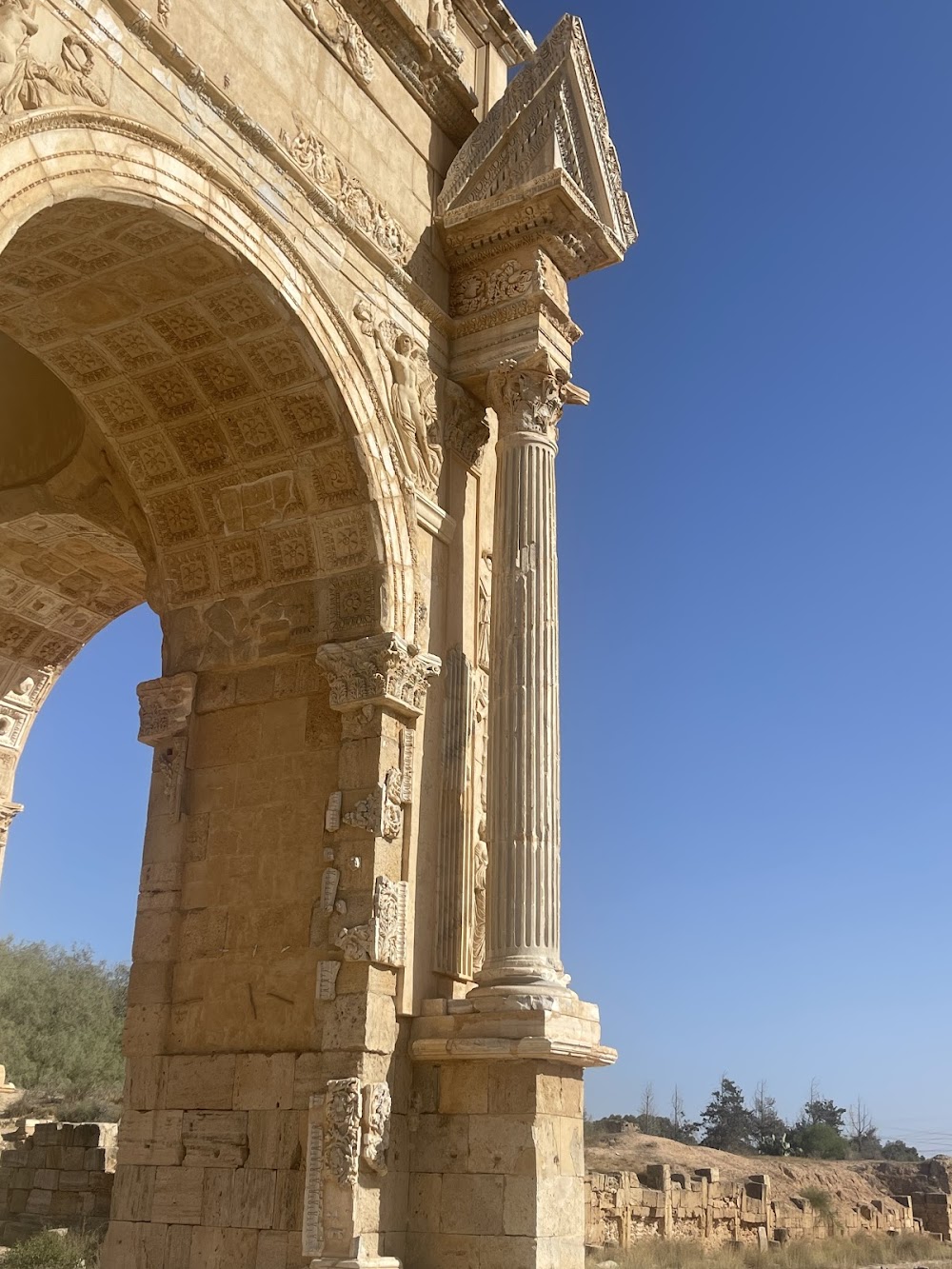Roman Ruins of Sabratha (أطلال سبراتة الرومانية)
Overview
Nestled along the tranquil coastline of modern-day Libya, the city of Murqub is home to the magnificent Roman Ruins of Sabratha. This spectacular ancient city invites you to step back in time and explore its stunning remnants of history. Renowned for its captivating past and breathtaking landscapes, Sabratha stands as a radiant example of Roman genius and architectural excellence, drawing history enthusiasts, archaeologists, and curious travelers from around the globe.
A Rich Historical Tapestry
Originally established as a Phoenician trading post in the 5th century BCE, Sabratha’s strategic coastal location facilitated vital trade routes across the Mediterranean. However, it was during Roman rule, beginning in the first century BCE, that Sabratha flourished into a prominent city adorned with grand architectural feats. Designated a UNESCO World Heritage site in 1982, Sabratha now serves as a testament to the city’s vibrant civilization and cultural assimilation over centuries.
The Grand Theater of Sabratha
One of the highlights of the ruins is the grandiose Theater of Sabratha. Built in the 2nd century CE, this stunning amphitheater could accommodate up to 5,000 spectators. The well-preserved three-story backdrop, or scenae frons, showcases intricate carvings and columns that reflect the grandeur of traditional Roman theater design. Beyond being a venue for performances, the theater stands as a cultural artifact representing the social and civic life of ancient Sabratha.
The Heart of Public Life: The Forum
Adjacent to the theater lies the Forum, the bustling heart of public life in ancient Roman cities. This square served as the focal point for trade, politics, and social interactions. Surrounded by significant structures such as the Temple of Liber Pater and the Basilica, the Forum was integral to the city’s religious and civic activities. As you wander among the columns and ruins, you can almost hear the echoes of ancient dialogues and bustling trade deals.
The Majestic Capitolium
The majestic Capitolium, dedicated to Jupiter, Juno, and Minerva, symbolizes the religious devotion and architectural prowess of the Romans. Its massive columns and intricate designs showcase the grandeur of Roman religious architecture. A visit to this site allows you to appreciate the artistic intricacies and deep reverence the Romans had for the divine.
Residential Neighborhoods and Mosaics
In addition to its grand structures, the Roman Ruins of Sabratha boast intriguing residential neighborhoods. The Villa Silin, known for its beautifully preserved mosaics, offers a glimpse into the lives of affluent Romans. As you stroll through these exquisite mosaics depicting vibrant scenes of daily life and mythology, you gain insight into the domestic elegance and artistic sensibilities of ancient times.
Early Christian Heritage
For those interested in early Christianity, Sabratha does not disappoint. The Basilica of Justinian, located on the eastern edge of the city, is an archaeological gem. This early Christian church, distinguished by its apse and nave, narrates the spread of Christianity throughout the Roman Empire and subsequent eras. The ecclesiastical remains provide a compelling narrative of spiritual life in ancient Sabratha.
Advancements in Medicine
Interestingly, Sabratha was not solely focused on grandeur and religion; it also functioned as a hub of healing. The ancient Medical Center, equipped with sophisticated medical instruments of its time, highlights the city’s advancements in medical knowledge and practices. The remains of this center reveal much about the medical expertise and healthcare approaches of the ancient Romans.
A Scenic Coastal Retreat
The Roman Ruins of Sabratha are not just about grand architecture; they also offer a picturesque setting by the Mediterranean Sea. The gentle sea breeze and soothing sounds of the waves create an ambiance that is both relaxing and profoundly moving. It’s the perfect place to reflect on the enormity of time and human achievement.
Visiting Sabratha is like embarking on a magnificent journey through history. Each stone, column, and mosaic tells a story of a civilization vibrant with trade, culture, religion, and awe-inspiring architecture. For any history aficionado or casual traveler, the Roman Ruins of Sabratha provide a captivating and unforgettable experience, allowing you to explore the echoes of an illustrious past while enjoying the scenic beauty of the Mediterranean coast.
Whether you are marveling at the grandeur of the theater, exploring the echoes of commerce in the Forum, or wandering through the intricate mosaics of the Villa Silin, Sabratha promises to leave you with a profound appreciation of Roman heritage and the timeless allure of ancient civilizations. So take a step back in history and let the Roman Ruins of Sabratha enchant you with their enduring legacy.



